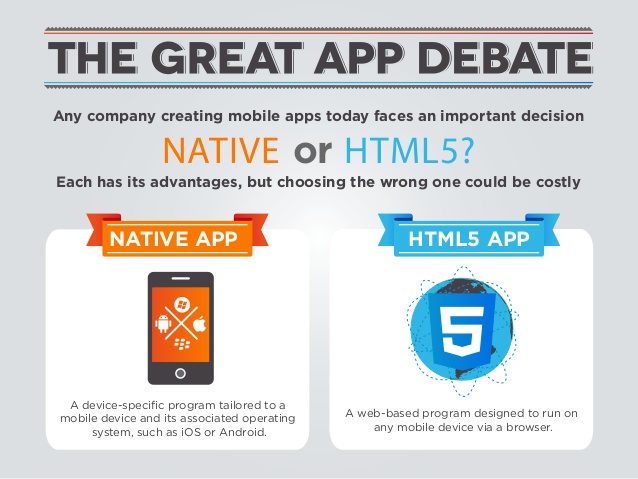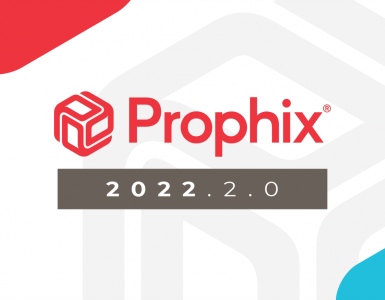The line between where web browsers end and apps begin is dissolving, which is great news for users, but not so great for operating system (OS) vendors.
Over the last 35 years, Microsoft’s Windows Operating System has become the dominant OS for personal computers, and as such, has had a major role in shaping today’s digital age. Yet, vendor-neutral standards are blurring the line between applications and web browsers, which means the curtain may be closing on Windows over the next five to 10 years.
Let’s look at how industry standards in the tech sector and the emergence of HTML 5 have shaped website and business application development.
Industry Standards in the Tech Sector
Since its inception, the tech sector has always been a bit like the untamed wild west. Unlike the heavily regulated health care or pharmaceutical industries, hardware and software companies deal with few regulatory requirements, and those that do exist generally relate to national security or consumer protection. The actual technical operation of devices to store, manipulate and exchange data has been largely a free-for-all, based on a free market and a “may-the-best-IP-win” approach.
Because of this, real industry standards for the tech sector have been few and far between. Declared industry standards, on the other hand, are much more plentiful. As the legendary computer industry pioneer Admiral Grace “Amazing Grace” Murray Hopper once said, “the wonderful thing about standards is that there are so many of them to choose from.” Admiral Hopper is incredibly accomplished and is certainly the only technology savant to have both a U.S. Navy destroyer and Cray supercomputer named after her.
Real industry standards tend to address complex low-level technical issues, such as how computers communicate, but vendors don’t always agree on these standards. For example, if phones, tablets, and computers are communicating with each other, it makes sense for there to be a standard way of describing a letter in a text document. Since the 1960s, there has been a standard known as ASCII where “1000001” (in binary) represents the letter “A” and “1000010” represents “B” and so on. However, IBM computers don’t use ASCII; they use EBCDIC, which is totally different and doesn’t include characters such as “{“.
The computer industry also has a history of vendors coming up with their own proprietary ways of doing things, which is a great customer retention strategy. It’s hard to move to a new vendor if that means replacing your entire system. Consequently, we end up with user interfaces that are drastically different – a Windows machine vs. an iPad.

The Emergence of HTML 5
It is therefore encouraging that a new standard has emerged in the industry. Giants such as Microsoft, Google, and Apple are active in the Web Hypertext Application Technology Working Group (WHATWG) and support HTML 5, a standard that defines the properties and behaviours of web pages. Combined with JavaScript (not to be confused with Java), HTML 5 has become the de facto standard for website and cloud app development. What is important is that no single company owns HTML 5 – it is a true vendor-independent standard.
Prior to HTML 5, websites were developed with technology that was often proprietary (i.e. expensive), limited in scope, and in many cases, difficult to maintain. Flash (from Adobe), Silverlight (from Microsoft), and Java applets were all touted as the web development environments of the future. But Flash and Silverlight have since been abandoned by their vendors, while Java is a general-purpose programming language that was extremely popular for web development. But it’s difficult for web developers to test their finished products in Java, and it’s proprietary technology owned by Oracle. Java is no longer the leading web development environment.
All three of these technologies require the installation of program components on every PC that will use the finished product. This is laborious and expensive for a company’s IT department, since each PC will require support and maintenance on all the installed components. But HTML 5 needs only a browser, such as Google Chrome or Microsoft Edge, and almost all PCs have these installed already.
A non-technical person might think, “so what? Websites have been around for decades.” It’s true, but have you noticed that websites are becoming more sophisticated, visually appealing, and easier to use? This is largely because of the rise of HTML 5, which is used to build both websites and computer applications.
In fact, the prevalence of HTML 5 and cloud computing is bringing about a significant technological convergence that is changing the way we think about our use of technology.
Websites vs. Cloud Applications
Historically, websites and computer applications have been viewed as completely different beasts. A website is hosted on the Internet and accessed using a web browser. Websites are where you go to look for information or purchase products.
On the other hand, applications, such as an ERP system, run on a PC and have a more complex function than websites. Apps, as they are now called, are usually run on a company’s in-house server, and have a “Windows-style” interface, differentiating them from websites.
But now that more companies are using cloud apps that have been developed with HTML 5, it’s difficult to tell a website from an app. Email providers are a good example of this. Originally, email looked and behaved like an app. But if you use gmail.com, you’re essentially visiting a website, rather than using an application.
This new technology means that cloud apps can be quite sophisticated. For example, many new ERP apps are cloud-based. Many established ERP vendors are also migrating their on-premise systems to the cloud.
Interestingly, some software vendors have products that can be accessed with a browser, but are available in the cloud and on-premise. Users of such products don’t know or care how the software is deployed because alternative deployments look and function identically.
Apps developed with HTML 5 will run on any browser, and web browsers are accessible from many different devices. This means that business applications can be built to run on tablets or smartphones. With these new technologies, apps and websites can automatically adjust the user experience based on the physical dimensions of each device. This means that a website or app will look differently on a smartphone than a PC, but it will (hopefully) be easy to use on both devices.
The Future of B2B Applications
In the future, it is highly likely that most apps will use a web browser as a front end, whether they run in the cloud or on-premise. When users can access apps from all devices, including tablets and phones, a Windows PC will no longer be the most common front-end for B2B applications. There are major advantages to this. As we discussed, apps will no longer need to be installed on users’ PCs, and so PCs can be less powerful and less expensive.
Even Microsoft, which has a vested interest in the continuing success of Windows, realizes that the world is changing. With Office 365, Microsoft has crafted versions of their software, such as Excel and Word, that are used as cloud apps and do not require powerful Windows machines.
This revolution is changing the way we think about our use of computers. If corporate applications can run in a browser, operating systems becomes less relevant. Microsoft realizes this, although they’ve historically made lots of money selling Windows. Five or ten years from now, Windows may be obsolete as we move to an age where getting easy access to intuitive app functionality takes precedence over the technology that delivers it.






